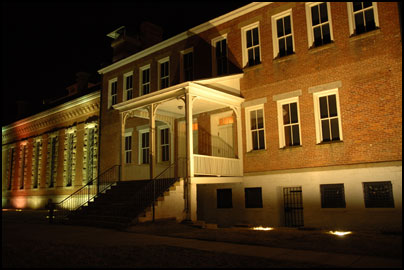 When Cherokee Old Settlers arrived in present-day Arkansas, they found themselves at odds with the Osage Indians, who already occupied the territory. Wars were frequent, and tensions escalated as the number of immigrant Cherokee increased. In 1817 the western migration of Cherokee was formally recognized by the US, and the first fort at Fort Smith was established to keep peace between Cherokees and Osages.
When Cherokee Old Settlers arrived in present-day Arkansas, they found themselves at odds with the Osage Indians, who already occupied the territory. Wars were frequent, and tensions escalated as the number of immigrant Cherokee increased. In 1817 the western migration of Cherokee was formally recognized by the US, and the first fort at Fort Smith was established to keep peace between Cherokees and Osages.
In 1838, the fort was a key stop along the Trail of Tears, marking entry into Indian Territory for those who took the water route. Once the Trail of Tears had concluded, Fort Smith was used again to hold dominion over the population of Indian Territory.
“Hanging Judge” Isaac Parker was appointed to the bench at Fort Smith in 1875. Judge Parker’s jurisdiction was the Western District of Arkansas, which included over half of the state of Arkansas and all of the Indian Territory. For years Judge Parker heard cases involving disputes between Indians and non-Indians. He sentenced 160 people to death, many with no right of appeal. His jurisdiction over Indian Territory ended in September 1896, and he died less than two months later.


Fort Smith Travel Details
The grounds are always open and accessible. The Visitors’ Center, gallows, and Commissary building are open daily 9 a.m. – 5 p.m. except Thanksgiving Day, Christmas, and New Year’s Day. Museum admission is $7.00 for adults.
Directions: Fort Smith in on the Arkansas/Oklahoma border just south of I-40. For specific directions, click the “Directions” link in the location bubble of the map above and enter your starting location on the left.
GPS & Map: 35.388297759235066,-94.42978620529175